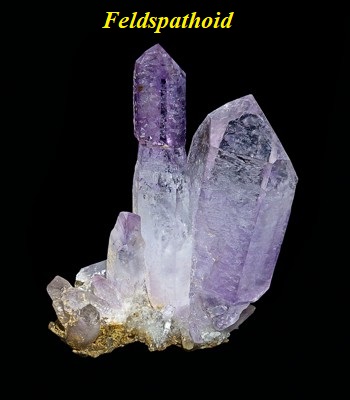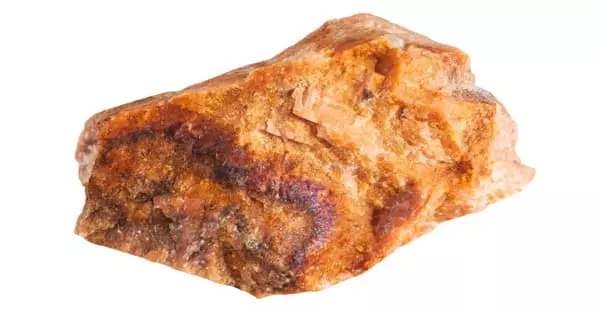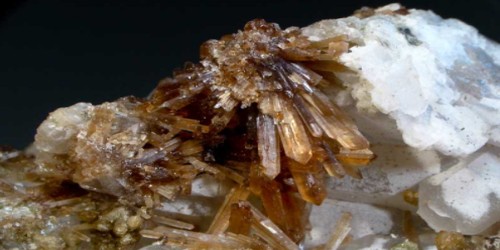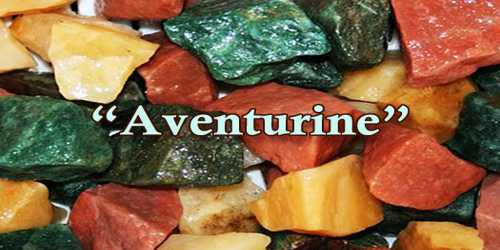The feldspathoids are a group of tectosilicate minerals which resemble feldspars but have a different structure and much lower silica content. The feldspathoid group minerals are sodium, potassium, and calcium aluminosilicates, many of which resemble the feldspars in appearance. It is a mineral consisting of an aluminous silicate (as leucite nepheline) that has too little silica to form feldspar. They occur in rare and unusual types of igneous rocks and are not found in rocks containing primary quartz.

Fig: Feldspathoids
Properties
Feldspathoids take the places of feldspars in igneous rocks that are undersaturated with respect to silica or that contain more alkalis and aluminum that can be accommodated in the feldspars. It commonly occurs with feldspars, and also with amphiboles, olivine, and pyroxenes, but never with quartz or other polymorphs of silica.
They are relatively rare. As noted previously, they are considered here primarily because they are the specific minerals used in naming alkalic igneous rocks.
Chemical Properties
The feldspathoids are not a typical mineral group like other mineral groups that are related by structure and chemistry. Their relation to each other is due primarily to their relationship to the feldspar group of minerals. Feldspathoids are low silica igneous minerals that would have formed feldspars if only more silica (SiO2) were present in the original magma. The aluminum to silicon ratio is nearly 1:1 in most of the feldspathoids but is closer to 1:3 in most of the feldspars. As would be predicted, feldspathoids are not found in igneous rocks that contain primary quartz.
Information Source:
















